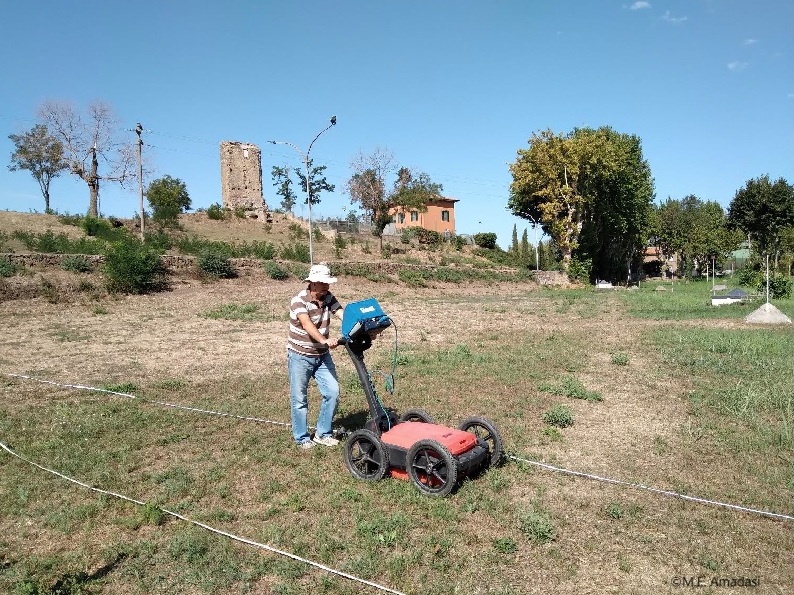User Group Leader: Maria Elisa Amadasi
Venue: Salone, Via Collatina, Rome
Despite their considerable significance the Aqua Virgo sources have never undergone thorough analytical examination. The continuous operation of the aqueduct, coupled with its entirely subterranean catchment system, has posed challenges to deepening our understanding of the water intake system and in what modality the water is transported from various channels to the main duct. The springs lay in the locality of Salone, about 20 km east from Rome, in a flat area in the vicinity of Via Collatina. Here minimal evidence related to the aqueduct is visible on the surface. Subterranean conduit explorations have often been dismissed as impractical or unfeasible. Consequently, resorting to non-invasive investigations has emerged as an optimal solution to enhance our comprehension of Aqua Virgo’s water intake system in Salone. Commencing with a detailed study of ancient and antiquarian sources, archival documents, and cartography, plans for field walking surveys were devised to improve our understanding of the area and its topographical features, alongside the establishment of geophysical prospections.
Between 2022 and 2023, non-destructive methods were deployed in two separate areas of Salone (sites A and B). The National Research Council (CNR) and the Institute of Heritage Science (ISPC) of Naples, under the coordination of Dr. Vincenzo Di Fiore, conducted both Ground-penetrating Radar (GPR) and Electrical Resistivity Tomography (ERT) investigations, yielding new data related to the complex water intake system. The GPR survey facilitated the exploration of the shallow subsurface, revealing intriguing results for site A, where a water channel was identified. Conversely, ERT investigations unveiled archaeological evidence in the deeper subsurface of site B, recognizing not only a documented channel from cartography, but also a previously unknown tunnel.
The research highlights the potential of non-destructive methods in acquiring new data in challenging investigation areas. Simultaneously, it underscores the importance of combining information from non-invasive methods with historical, archaeological, archival, and topographical data for a more accurate interpretation. The data obtained in this research serve as a foundation for future studies on the Aqua Virgo sources area and other sites sharing similar geological and archaeological characteristics.
For the complete report: https://zenodo.org/records/14731241

